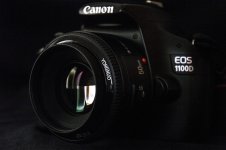In the world of photography, understanding the fundamental concepts of exposure is essential to capture stunning images. ISO, one of the three pillars of exposure along with aperture and shutter speed, plays a crucial role in determining the sensitivity of your camera's image sensor to light. In this blog post, we will delve into the realm of on-camera ISO photography settings, unraveling their significance and providing you with valuable insights to enhance your photography skills.

Remember, photography is a continuous learning process, and each click of the shutter is an opportunity to refine your skills. So, grab your camera, explore different ISO settings, and embark on an exciting visual adventure!
Happy shooting!
- Understanding ISO: ISO, an acronym for the International Organization for Standardization, refers to the sensitivity of your camera's image sensor to light. In simpler terms, it determines how bright or dark your image will appear. Lower ISO values (e.g., 100) indicate lower sensitivity, resulting in a darker image, while higher ISO values (e.g., 3200 or above) amplify the sensor's sensitivity, capturing brighter images. However, increasing the ISO comes at a cost of introducing digital noise or graininess to your photos.
- Controlling Exposure: ISO settings can significantly impact exposure, especially in situations where you have limited control over lighting conditions. When shooting in low light environments, such as indoors or during nighttime, increasing the ISO can help you achieve a properly exposed image without compromising the shutter speed or aperture settings. On the other hand, in well-lit scenarios, using a lower ISO value can maintain image quality by minimizing noise.
- Balancing ISO with Aperture and Shutter Speed: ISO works in tandem with aperture and shutter speed to achieve a well-balanced exposure. A wider aperture (lower f-number) allows more light to enter the camera, enabling you to use a lower ISO. Similarly, a faster shutter speed reduces the amount of light reaching the sensor, making it possible to use a lower ISO setting. By adjusting these three settings, you can strike a balance and create the desired exposure for your photographs.
- Understanding Noise: As mentioned earlier, higher ISO settings introduce digital noise or grain to your images. This noise can degrade image quality and reduce details. Modern cameras are equipped with advanced noise reduction algorithms, but it's still crucial to keep ISO as low as possible to minimize noise. Experiment with your camera to find its optimum ISO range where noise is acceptable for your preferences.
- Creative Uses of ISO: While the primary purpose of ISO is to control exposure, it can also be employed creatively. High ISO settings can be intentionally used to introduce a grainy or vintage effect, adding character to your photographs. Such artistic choices can be particularly effective in black and white photography or when capturing certain genres like street photography.
Remember, photography is a continuous learning process, and each click of the shutter is an opportunity to refine your skills. So, grab your camera, explore different ISO settings, and embark on an exciting visual adventure!
Happy shooting!
